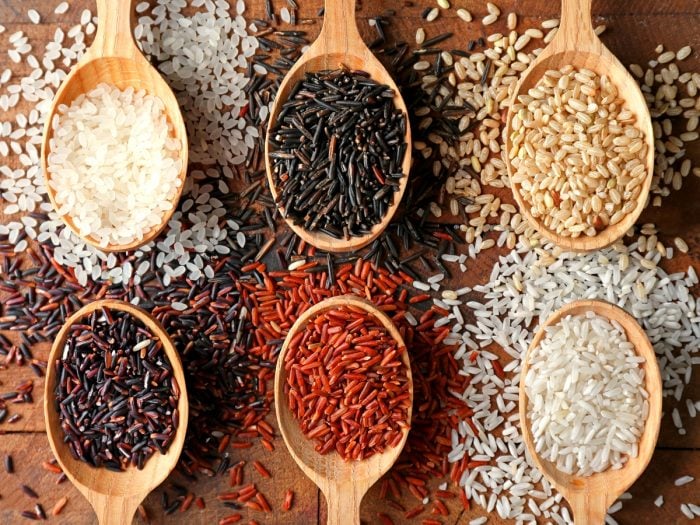There are many different types of rice in the world, but knowing the differences between these many varieties can be confusing, to say the least. These classifications apply to subgroups of rice, while others are specific species or variants.
Long, Medium, & Short Grain Rice
There are mainly three types of rice, including long-grain, medium-grain, and short-grain rice. Other rice types include basmati, parboiled, glutinous, polished, unpolished, and jasmine rice.
Long-Grain Rice
These grains of rice are about 4-5 times longer than they are wide, and don’t tend to clump together when cooked.
Medium-Grain Rice
About 2-3 times longer than their width, these types of rice can be chewy and tender, and often clump together, making them ideal for risottos.
Short-Grain Rice
Often mistaken for medium-grain rice, this variety is slightly longer than it is wide, and clumps together easily; sushi rice is an example of short-grain rice.
Sticky and Parboiled Rice
Sticky Rice
This is a rice variety primarily grown in Asia, also known as glutinous rice. The name comes from how sticky the rice is – like glue. It has opaque grains and is a staple food in many Asian nations. [1]
Parboiled Rice
This is a type of rice prepared in a unique way; rather than removing the outer hull to cook brown rice, the outer shell is left on while this rice is steamed and dried. Then the outer shell is taken off for a less clumpy and more nutrient-dense variety of rice. [2]
Polished, Brown, Forbidden, Wild, & Red Rice
Polished Rice
Polished rice is rice that has been milled, which effectively strips away much of the protein and vitamin content. Traditional white rice is considered polished rice, and therefore less nutrient-dense than other varieties. [3]
Brown Rice
Brown rice is rice that has not had the inner husk removed – meaning that it hasn’t been milled – and thus provides a much higher content of fiber and nutrients, as well as more flavor while helping to control blood sugar fluctuations. [4]

Different types of rice have their own unique flavor and nutrition content. Photo Credit: Shutterstock
Forbidden Rice
Also known as black rice, forbidden rice has a very high concentration of anthocyanins, which give it the black color. High in nutrients and relatively rare, this rice variety was once only allowed to be eaten by royalty. [5]
Wild Rice
Wild rice is one of 4 different species of grasses that produce rice-like cereals; commonly found in North America and China, wild rice remains a popular cereal option in many parts of the world. [6]
Red Rice
Red rice is similar to forbidden rice in that it is colored due to its unique anthocyanin content. This provides the red color to the husk, which can either be partially or fully removed before preparing this type of rice. Nutritionally, this rice is very similar to brown rice and is primarily cultivated in France.
Basmati, Jasmine, Arborio, & Sushi Rice
Basmati Rice
Traditionally grown, found and used in India, basmati rice is a long-grain variety with a very delicate texture. It also has a medium glycemic index – more than 20 points lower than white rice – making it a more healthy option for people trying to watch their carbohydrate intake and blood sugar levels. [7]
Jasmine Rice
One of the unique varieties of rice, jasmine rice is a long-grain variety that is commonly grown in Southeast Asia and has a very pleasant, fragrant aroma. The smell of jasmine rice, which makes it popular all around the world, is due to the grain’s natural production of certain aromatic compounds. [8]
Arborio Rice
Perhaps the most famous Italian short-grain rice variety, arborio rice has a unique property of not becoming soft and gooey when cooked, like so many other short-grain types. Instead, it remains firm and creamy, making it one of the preferred rice bases for risotto. [9]
Sushi Rice
Sushi rice is a type of rice that is prepared by mixing regular sticky rice with rice vinegar, salt, and sugar to create a recognizable bite in a sushi roll. Originally from Japan, sushi rice is now found globally. [10]
